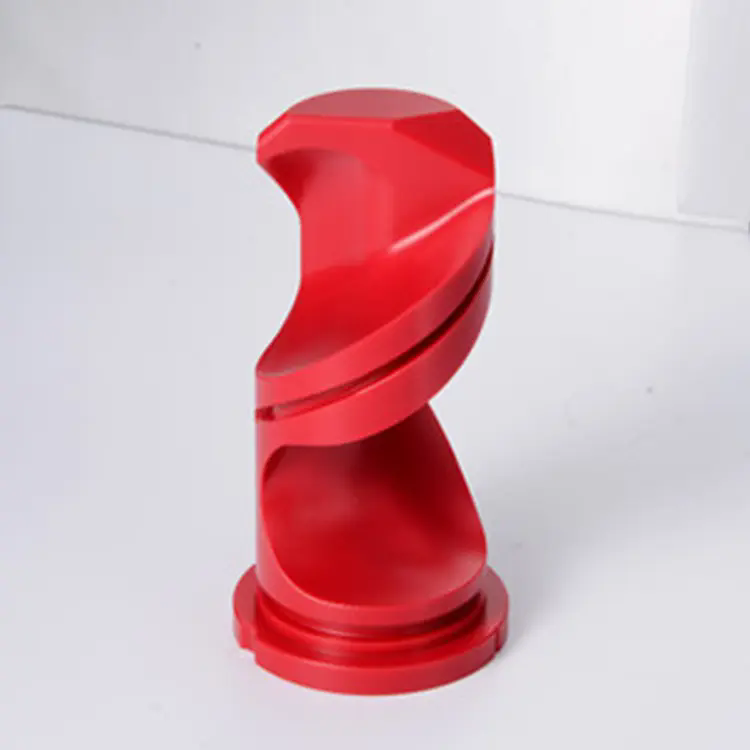What Makes CNC Machining POM the Ideal Choice for High-Precision Components?
2025-09-08
In today’s rapidly evolving manufacturing landscape, CNC machining POM (Polyoxymethylene) has become a preferred solution for industries seeking high-precision, durable, and cost-efficient components. Whether you are in automotive, electronics, medical devices, or consumer products, POM offers a unique blend of strength, machinability, and performance. But what makes CNC machining POM stand out from other materials and processes? This comprehensive guide explores its advantages, applications, machining techniques, and product specifications, offering insights into why it’s the go-to choice for manufacturers worldwide.
Polyoxymethylene (POM), also known as acetal, is a high-performance engineering thermoplastic widely used in CNC machining for producing tight-tolerance components. Its natural hardness, low friction, and dimensional stability make it ideal for applications requiring strength and precision.
Key Advantages of CNC Machining POM
-
High Dimensional Stability – Maintains shape and size even under temperature variations.
-
Low Friction and Excellent Wear Resistance – Ideal for gears, bushings, and sliding components.
-
Superior Mechanical Strength – Withstands high stress and impact.
-
Excellent Chemical Resistance – Suitable for harsh operating environments.
-
Easy Machinability – Allows precise cutting, drilling, and shaping for complex geometries.
Why Choose CNC Machining for POM Components
CNC (Computer Numerical Control) machining provides unmatched precision and repeatability, which are critical when working with engineering plastics like POM. Unlike injection molding, CNC machining is ideal for small to medium production runs where design flexibility and accuracy are essential.
By combining CNC technology with POM’s inherent properties, manufacturers achieve components that are:
-
Highly accurate with tolerances as tight as ±0.02mm.
-
Cost-effective for both prototypes and production.
-
Consistently reliable in demanding environments.
Technical Specifications and Product Parameters
When working with CNC machining POM, understanding its mechanical and thermal properties is crucial for selecting the right grade and achieving optimal results. Below is a detailed table of the common specifications used in industrial applications:
| Property | Typical Value | Description |
|---|---|---|
| Material Type | POM (Acetal) | Engineering thermoplastic with excellent machinability |
| Density | ~1.41 g/cm³ | Lightweight yet durable |
| Tensile Strength | 60–70 MPa | High resistance to stretching and deformation |
| Flexural Modulus | 2,800 MPa | Excellent stiffness for structural components |
| Coefficient of Friction | 0.2–0.35 | Low friction suitable for sliding parts |
| Continuous Use Temp. | -40°C to +100°C | Operates reliably under extreme conditions |
| Moisture Absorption | <0.8% | Maintains dimensional stability in humid environments |
| Machining Tolerance | ±0.02 mm | High-precision results achievable |
| Available Grades | POM-H, POM-C | Options for homopolymer and copolymer grades |
Applications of CNC Machining POM Across Industries
Due to its exceptional properties, CNC-machined POM components are widely used in multiple sectors where precision and reliability are essential. Here are some of the most common applications:
Automotive Industry
-
Gears and Bearings – POM’s low friction ensures smooth operation in transmission systems.
-
Fuel System Components – Chemical resistance makes it suitable for fuel line parts.
-
Door Locks and Window Mechanisms – Durability and stability improve long-term performance.
Electronics and Consumer Goods
-
Connectors and Switches – Excellent electrical insulation properties.
-
Precision Housings – Stable under high temperature variations.
-
Mechanical Keyboard Parts – Low friction ensures smooth keystrokes.
Medical Equipment
-
Surgical Instrument Handles – Lightweight, strong, and easy to sterilize.
-
Pump Components – Resistance to moisture and chemicals makes POM ideal for fluid-handling systems.
Industrial Machinery
-
Conveyor System Parts – Low friction enhances efficiency.
-
Valve Components – High dimensional stability ensures precise sealing.
-
Bushings and Rollers – POM’s wear resistance extends lifespan.
By combining CNC machining technology with POM’s engineering capabilities, manufacturers can produce components that meet stringent industry standards and maintain consistent quality.
Process Insights and Best Practices
Achieving the best results with CNC machining POM requires understanding its machining characteristics and implementing the right strategies. Below are key considerations:
Optimal Machining Techniques
-
Tool Selection – Use sharp carbide tools to minimize frictional heat and achieve smoother finishes.
-
Cutting Speed and Feed Rate – Moderate speeds with high feed rates reduce heat buildup.
-
Coolant Use – Air cooling is recommended; excessive liquid cooling can lead to dimensional instability.
-
Workholding Precision – Proper clamping ensures stability and prevents material deformation.
Surface Finish Quality
CNC-machined POM parts often require minimal post-processing. Thanks to its natural smoothness, components typically achieve:
-
Surface roughness as low as Ra 0.8 μm
-
Ready-to-use finishes without extensive polishing
Prototyping and Production Efficiency
CNC machining offers unmatched flexibility for rapid prototyping with POM, allowing manufacturers to:
-
Test product designs before mass production.
-
Quickly modify geometries without expensive tooling changes.
-
Scale production seamlessly when needed.
CNC Machining POM FAQs
Q1: Why choose CNC machining POM over injection molding for small batches?
A: CNC machining is ideal for small-to-medium production runs where flexibility and accuracy are critical. Injection molding requires expensive tooling and is cost-effective only for large-scale manufacturing, while CNC machining delivers precision without the upfront investment.
Q2: How durable are CNC-machined POM components under mechanical stress?
A: POM offers excellent mechanical strength and fatigue resistance, making it highly durable under repetitive loads and stress. CNC machining ensures precise geometries, enhancing overall performance and extending component lifespan.
Choosing the right manufacturing partner is as important as selecting the right material. At KGL, we specialize in CNC machining POM with a focus on precision, quality, and reliability. Our advanced CNC facilities, skilled engineers, and strict quality control enable us to deliver components that exceed client expectations.
Why Partner with KGL:
-
Cutting-edge CNC machining equipment for high-accuracy results.
-
Expertise in working with POM and other engineering plastics.
-
ISO-certified quality management for consistency and reliability.
-
Flexible production capabilities, from prototyping to full-scale manufacturing.
If you’re looking for a dependable partner for CNC machining POM components, KGL offers the expertise and technology to bring your designs to life with unmatched quality.
Contact us today to discuss your project requirements and discover how we can help you achieve precision, performance, and efficiency.



